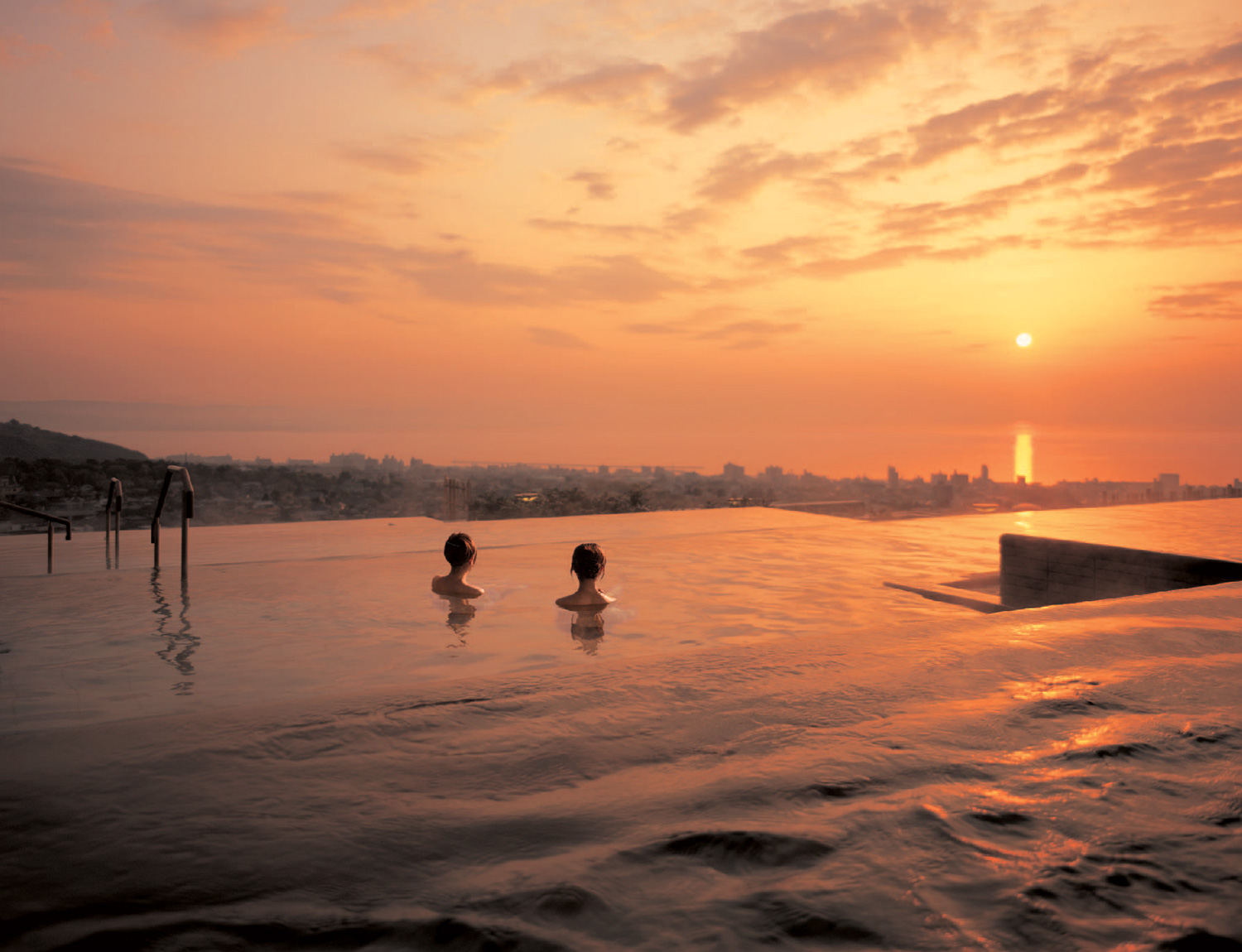Bathing & Onsen Etiquette

Onsen are enjoyed for their therapeutic, relaxing qualities and are one of Japan’s great attractions; a perennial favourite among both the Japanese and overseas visitors. Buddhism, which first arrived in Japan in 552, used onsen for purification rites. To this day bathing in Japan remains a ritual, an art distinctly Japanese.
Visiting an onsen for the first time may be intimidating, but it is not as daunting as it may seem. One can usually figure out what to do by simply observing other bathers, but here are some helpful tips:
To the bathhouse
Before departing for your onsen experience check whether you need to take a towel with you to the baths. Hotel accommodation will leave a towel in your room, and most public baths will provide one for a small fee if you forget to take one. However, off-the-beaten-path local varieties may not have anything available and, if you do not have a towel, you will have to rub or shake yourself dry. If staying in accommodation take along the yukata cotton robe, found along with the towel in your room, to wear after bathing.
Make sure you enter the appropriate bathing area: Otoko-no-yu for men usually have a blue or purple drape, and Onna-no-yu for women a red or pink one hanging outside their respective entrances.
Once safely ensconced in the correct changing room strip down to your birthday suit! The changing area will have lockers or baskets to contain your clothes. The Japanese generally seem disinterested in seeing others in the nude – at least of their own sex - but you may like to use this towel as a cover for your modesty. Most onsens, except the most local of local ones, provide soap, shampoo and conditioner. However, there is no problem in taking in your own preferred varieties.
Entering the bathing area
First, thoroughly wash yourself off at the faucets and shower area, which usually line the walls of the bathing area. The Japanese sit down while doing this on a stool, which is provided, and leisurely scrub themselves down and wash their hair. Whatever you do, most definitely scrub and wash off all suds completely before attempting to enter the bath itself. Never ever wash in the bath.
Soaking in the bath
Suitably readied you may now soak in the bath. Before stepping into the water check the water temperature, which can be hotter than expected on occasions especially near to where the hot spring is issuing into the bath. Note also that the sides of the bath can be slipper and care needs to be taken when climbing in. Do not put your small towel into the waters. Instead, you can leave it at the bath side or fold it up and leave it on your head.
The preliminaries complete you can now enjoy a thorough and relaing soak! As with any Japanese bath, you are free to enter and exit the bath as many times as you like. Some onsen also have rotenburo outdoor baths. Soaking in these as snow falls around you or on a clear night with Milky Way high above takes the onsen experience to sublime levels
Leaving the bathhouse
As the minerals in the water are considered beneficial, many people choose not to shower again after bathing, but it is not taboo to do so if you would like to. Before re- entering the changing area, use the towel you enter the bathing area with to remove excess water. If you do not have another towel, well rung out your wash towel will remove almost all the moisture from your body. The final drops will quickly evaporate with the heat that has been absorbed into you from the onsen waters.
Tattoos & Onsens
As a general rule, visitors with tattoos are not allowed into onsen baths because of their association with organised crime. However, in recent years the growing number of foreign visitors has seen some establishments relax their policies. Before entering the bath just let your host or hostess know you have a tattoo and frequently they will come up with a solution that keeps everyone happy. For example, other Japanese guests tend to bath earlier and you may be asked to go that little bit later, or a private bathing area, which may be at an additional charge, will be made available for your use.
In Beppu, at the Takegawara and Kaihama Onsens, which are both famed for their sand baths, all guests are wrapped in yukata so the issue should not arise. The same reasoning follows for Kannawa’s Mushiyu Onsen.
For more information on onsen in general and those in the prefecture that are tattoo-friendly please refer to Oita's Explore the Onsen Country website.


